Chengdu: the Land of Milk and Honey Set in a Single City– is the capital city of Sichuan province in China. Being the home of over 3 million people, it continues to grow and develop remarkably. Chengdu is famous worldwide for its amazing ancient traditions and fast paced modern innovations. Engineering and sustainability are the two leading sectors of Chengdu’s economy, allowing the city to simultaneously maintain its rich traditional heritage. In this article, we have attempted to provide an informative guide about Chengdu’s most appealing tourist spots for 2025, focusing on its unique blend of cuisine, vivid art culture, charming historical sites, and outstanding construction works. Chengdu is the answer to every person’s question. Chengdu paradoxically manages to satisfy its tourists who crave deeper cultural understanding and those who simply wish to gorge on the sights of a forever modernizing city passively.
What are the must-visit attractions in Chengdu?
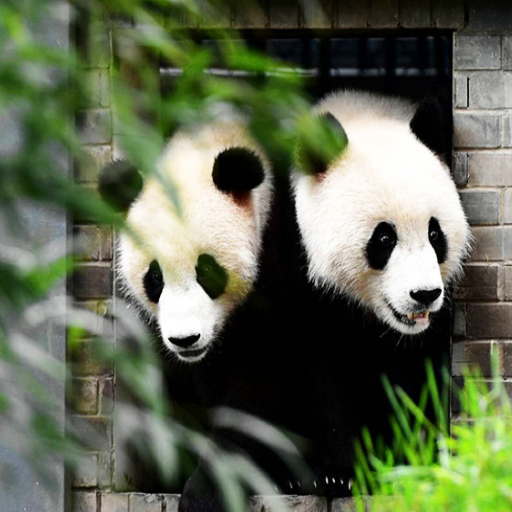
Research Panda breeding in Chengdu
The breeding facility operates at the level of the best-renowned centers in the world, specializing in scientific research, preservation, and breeding of giant pandas. This facility is located at a distance of 10 km from Chengdu’s city center. It has the best coverage of panda rehabilitation habitats available, allowing guests to see pandas in places that look like their natural environment. The base also features red pandas and pandas in all stages of their life cycles, from newborn cubs to adults, for a total of more than 150 giant pandas. Visitors can walk around the vast area comprising of bamboo jungles, educational museums, and research labs and discover the ongoing efforts towards conserving this species and the challenges it faces. The facility operates throughout the year, and the mornings are the best time to catch the pandas feeding and engaging in other playful activities.
Unearthing the ancient Jinsha Site Museum
Recognized as one of the Chengdu, China’s archaeological and cultural achievement nations, the Jinsha Site Museum is touted as the country’s jaw-dropping shrine of the ancient Shu civilization. The site was identified in 2001 and possesses gold masks, bronze and jade artifacts, numerous relics, and a treasure trove of advanced craftsmanship. The site predates back to 3000 years in during the Shang and Western Zhou periods. It provided indoor exhibition halls containing remnants such as sacrificial zones, antique furniture from the domestic quarters, and an outdoor dig site. It’s a prime spot to learn about Shu civilization and China’s ancient social, political, and religious practices.
Getting to know the lively Chengdu city center
The heart of Chengdu’s city center presents a fascinating blend of modernity and traditional charm, making it an important commercial and cultural center. The bustling pedestrian thoroughfares, such as Chunxi Road, are well known for shopping, local markets, and dining, especially for the famous spicy hotpot: Tianfu Square and other historical temples near the square showcase tourists’ interest in the place’s culture. At the same time, Chengdu’s Wuhou and Qingyang districts are famous for their public Wide and Narrow Alleys, which exhibit a fusion of history and modern architecture along with cafes and art museums for an upbeat experience for travelers and citizens.
How can I plan the perfect Chengdu itinerary?
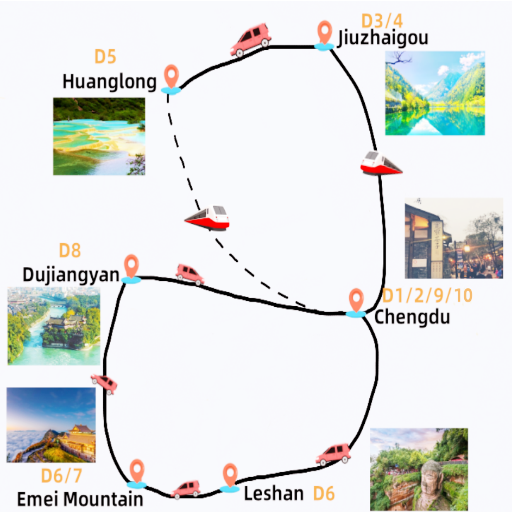
Incorporating both the modern and the traditional Chengdu landmarks in balance
To have a flawless Chengdu itinerary, start with the traditional parts of the city, such as the Chengdu Research Base of Giant Panda Breeding and the Wuhou Shrine, which explains the period of the Three Kingdoms in China. For modern attractions, the city’s Chunxi Road is perfect for shopping and dining. Another modern city attraction is the Sichuan Opera, which offers face-changing performances. Balancing this, spend a day in the Wide and Narrow Alleys for modern gastronomy and local crafts while enjoying traditional architecture. Make sure to have ample time for cultural landmarks and modern hotspots to understand Chengdu’s unique modern fusion fully.
Including Chengdu Sightseeing Trips
Chengdu is a hub that can be centrally located to explore numerous features around the city through defined day trips. One of the most popular attractions is the Giant Panda Research Base, located a few miles away from the city, where one can appreciate these animals in a semi-natural environment. Chengdu also encompasses Qingcheng Mountain, a UNESCO World Heritage Site with Taoist temples and other beautiful holistic sites. The ancient Dujiangyan Irrigation System is also in proximity and is an engineering wonder still in use. For those seeking even more thrills, head out to the Leshan Giant Buddha, a huge stone statue carved on a cliff as a mark of Buddhist heritage. All regions have much to offer with Sichuan’s history, nature, and ingenuity.
Using Chengdu’s Metro System to Make the Most Out of Your Trip.
Chengdu’s metro is one of China’s most significant and efficient, and its modern networks allow rapid travel throughout the city. With a fully functioning operational infrastructure of over 500 kilometers and over 13 active lines, endeavors such as taking a trip to Tianfu Square, Chengdu Research Base of Giant Panda Breeding, and even the Wide and Narrow Alleys (Kuanzhai Xiangzi) are made possible. Chengdu’s metro generally operates from 6 a.m. to 11 p.m., with trains arriving every 2 to 6 minutes based on the time of the day. Tickets are affordable, ranging from 2 to 10 RMB based on distance, and can be purchased via machines at each station or through mobile payment apps. The most convenient option upon buying a ticket is the Tianfu Tong card or digital payment via Alipay and WeChat to avoid queuing. There is ample English throughout the metro regarding signage and announcements, greatly assisting those who do not speak Mandarin and ease the travel experience.
What unique cultural experiences can I have in Chengdu?
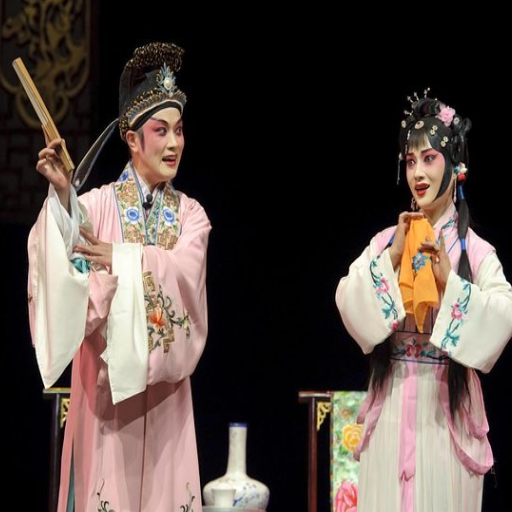
Mesmerized During A Performance Of The Sichuan Opera In Cheng Du City
Renowned for its music, dance, and acrobatic components, Sichuan opera incorporates ‘face changing’ (bian lian), its signature feature. Bian Lian is a centuries-old art form where performers swiftly change masks, leaving the audience astonished. Alongside themed costumes, the opera also features fire breathing. Famous and iconic theaters like the Shu Feng Ya Yun Opera House and Jinjiang Theater in Chengdu boast this rare art form and English subtitles. At these locations, audiences will find thoroughly engaging performances highlighting the traditions and customs of Sichuan province. A stunning 90-minute-long performance is set for the rich heritage of Sichuan.
Touring the Wuhou Chapel for the first time
Situated in Chengdu, Sichuan Province, the Wuhou shrine is a cultural centerpiece that pays tribute to Zhuge Liang, the famous general’s strategist during the Three Kingdoms. The shrine covers a big area with different halls, quaint yards, and stunning gardens, so it’s relaxing and historic. The prominent features of the shrine include the chief hall, where statues of Zhu Ge Liang, Liu Bei, and other idols are positioned, and the calming Liu Bei Mausoleum. It is also possible to view the A museum for the strategies and successes which the Shu kingdom had achieved. The area is entire of profound historical artifacts and structures, which is significant for advocates of Chinese civilization and the Three Kingdoms Period.
Investigating Chengdu’s tourism ancient towns and Buddhist temples
The remaining ancient towns and Buddhist temples in Chengdu, Japan, relate substantially to the city’s culture and history in terms of their heritage and religion. Jinli Ancient Street is cherished for its traditional structure and local delicacies. At the same time, Huanglongxi Ancient Town features cobbled streets and temples that provide a glimpse into life during the Qing Dynasty. Other must-see sites include the Qingyang Palace Taoist Temple, one of China’s most important temples and Wenshu Monastery Garden. This Buddhist monastery has beautiful gardens and compassionate sutras. All these places capture one’s attention by displaying a unique blend of history, culture, and faith.
Where can I find the best food experiences in Chengdu?
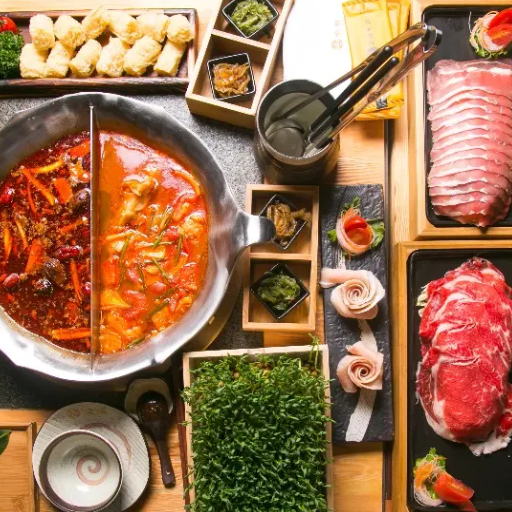
Experiencing authentic Sichuan hot pot
In order to get the real essence of Sichuan cuisine, one must try the Sichuan hot pot. Great places like Shu Jiu Xiang, Haidilao Hot Pot, and Xiao Long Kan Hot Pot are famous for their rich, numbing broths that are served alongside an array of fresh ingredients and excellent service. These establishments never fail to capture Sichuan’s sharp and rich culinary heritage through their flavored broth bases. Hotpot is always served with dipping sauces like sesame oil or garlic, which make the meal unique in Sichuanese fashion.
Touring the Sichuan Cuisine Museum
Visitors of Chengdu are bound to discover more than a few gems within the Sichuan region, and one of them is undoubtedly the Sichuan Cuisine Museum. Besides providing background on its rich history, the museum also maintains ancient cooking tools, old recipes, and other artifacts from the Sichuanese era. The museum’s highlight, however, is letting all the visitors partake in fully guided immersion experiences, such as learning how to properly cook Sichuan classics like Mapo Tofu and Kung Pao Chicken. Additionally, the museum contains insightful Sichuan peppercorns among other essential ingredients so the guests could formulate an in-depth understanding of the Sichuan flavors. Tasting genuine dishes made by expert chefs marks the end of the tour, making it an unearable experience.
Investigating local trade and fast-food joints.
The exploration of local market scenes and street food depicts the life and culture of a particular region at its best. These bustling centers contain various locally grown fruits and vegetables, exotic spices, and handmade crafts that exemplify the region’s food tradition and heritage. Street food vendors offer a variety of freshly cooked food options, from savory appetizers to snacks and delectable sweets that locals and tourists enjoy for a very reasonable price. It’s selling, and it’s self-promoting the local businesses. These activities help the local people and make it possible for the tourists to interact with locals, know about the local specialties, and feel the essence of the place which is part of the community’s culture.
What are some popular day trips from Chengdu?
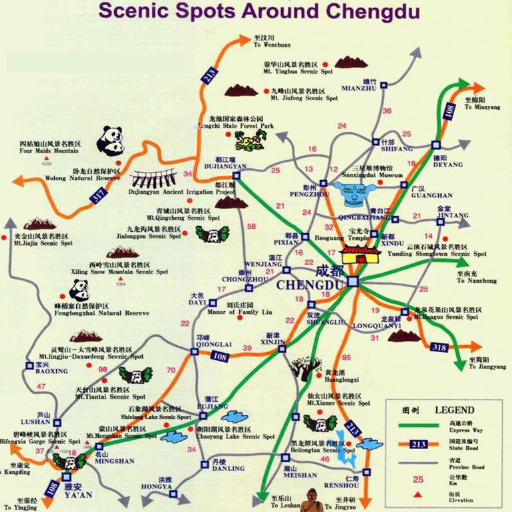
Soaking up the Spectacular View of the Leshan Giant Buddha
One of the world’s wonders is a 71-meter-high Leshan Giant Buddha, the largest Buddha statue in the world. The statue was built during the Tang dynasty and is two hours away from Chengdu City. It’s a UNESCO World Heritage Site situated at the junction of three rivers: Minjiang, Dadu, Qingyi. Visitors can get a glimpse of the fine details and massive stature by visiting designated viewpoints or taking a boat trip for a wider perspective of the statue. The statues, temples, walking trails, and other ancient buildings are also present, making it a great place for those interested in history, religion, and nature.
Investigation of the Dujiangyan Irrigation System
Approximately an hour from Chengdu, there lies a remarkable piece of engineering known as the Dujiangyan Irrigation System; this feat was built in 256 BCE during the Warring States Period and still stands to this day, making it the oldest functional irrigation system in the world. Dujiangyan is a UNESCO world heritage site, meaning it is recognized for its province-wide significance, which was and still is managed through the system designed by Li Bing, who redirected water from the Minjiang River without dam structures. By doing so, Li Bing managed to avert floods while irrigating large amounts of farming land. As of now, the site has many modern attractions, allowing people to examine and experience the unparalleled design of the site while learning more about key components like the Fish Mouth Levee, Feisha Sluice and Baopingkou Spillway. In addition, the two King temples, along with the magnificent mountains and rivers surrounding the site, act as hiking trail sights.
Exploring The Sanxingdui Museum
The Sanxingdui Museum, located in Guanghan, Sichuan Province, is recognized as the site of one of the most remarkable archaeological finds of the 20th century. The museum displays artifacts from the ancient Shu civilization, which are more than 3000 years old. These artisan superbly crafted and highly intricate bronze masks, gold adornments, jade ornaments, and pottery pieces stand as evidence of a more enigmatic and culturally advanced civilization than previously thought. The vastness of the collection suggests a civilization lost to time. The museum is structured into two main pavilions showcasing immersive exhibits depicting the rituals, beliefs, and artwork of the now-forgotten civilization. Many visitors are left aghast at the astounding craftsmanship exhibited in the bronze figures and masks which differ entirely from those produced by other ancient civilizations.
How can I experience modern Chengdu?
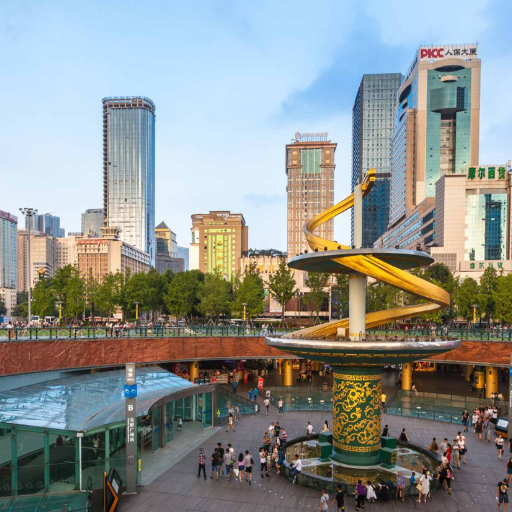
Visiting the New Century Global Center
One of the largest buildings in the world in terms of floor area, the New Century Global Center, located in Chengdu, hosts a wide range of experiences all in one location. Shopping malls, office spaces, an artificial beach, and even a water park paired with luxury hotels and a multitude of dining choices means that this complex has it all. The main attraction is the Paradise Island Water Park wherein the visitors get to enjoy a tropical vibe with a touch of a 492-foot LED screen that displays nature scenery. Chengdu and the Global Center invite tourists and locals alike to experience entertainment, leisure and business all in one place. No matter the time of year, the climate-controlled environment makes enjoying the space possible at all times.
Looking into the present-day art scene in Chengdu
Chengdu’s contemporary art scene incorporates international elements while integrating local customs and carving a unique culture. Chengdu Contemporary Image Museum is a vibrant contemporary photography and multimedia montage that all tourists must visit. The A4 Art Museum is another important venue for international contemporary exhibitions and public events that endorse experimental art. Furthermore, an important center is the Luxelakes·A4 Art Center which combines harmonious nature with modern art sculptures and set pieces, as well as creative workshops. These places in Chengdu are evidence of the city’s imaginative and innovative spirit and the desire to promote art among people of various backgrounds.
Shopping in Chengdu’s stylish districts
Visitors looking for shopping experience will find Chengdu an oasis matching their fashion stylist niche as they enjoy the modern shopping malls and traditional markets. The Taikoo Li on the city center is notable for its luxury brands, boutique shops and fine dining establishments inside the beautifully designed open-air complex. Chunxi Road is the commercial center of Chengdu where international franchises as well as domestic stores can be found. For specialty shopping, wide and narrow alleys come in handy and so this sick and antique city is known for its artisan crafts, specialty teas, and cultural souvenirs. These locations vividly express the contemporary stylishness and diversity of retail in Chengdu.
Reference sources
Frequently Asked Questions (FAQs)
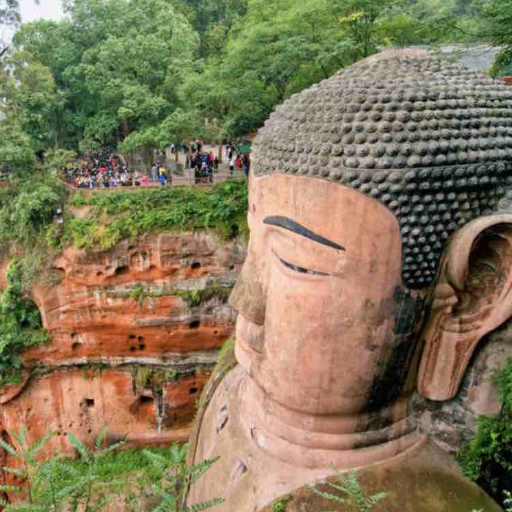
Q: What are the top things to do in Chengdu in 2025?
A: Some of the top things to do in Chengdu in 2025 include visiting the Chengdu Panda Base, exploring the Chengdu Museum, experiencing the famous Chengdu hotpot, and touring the historic Jinli Street. Other must-do activities are visiting the Leshan Giant Buddha, exploring the Wenshu Monastery, and taking a day trip to Mount Qingcheng. The city’s expanding metro system makes it easier than ever to explore these attractions.
Q: When is the best time to visit Chengdu?
A: The best time to visit Chengdu is typically from March to June and September to November. The weather is mild and comfortable during these months, making it ideal for outdoor activities and sightseeing. Autumn (September to November) is delightful, with clear skies and comfortable temperatures. However, if you’re planning a trip to Chengdu, keep in mind that the city can be visited year-round, each season offering its own unique experiences.
Q: How can I visit the Chengdu Panda Base, and what can I expect to see there?
A: To visit the Chengdu Panda Base, you can take the Chengdu Metro Line 3 to Panda Avenue station or join a Chengdu tour that includes the base. The best time to visit is early morning when the pandas are most active. At the base, you can expect to see giant pandas in various enclosures, including adorable cubs in the nursery. You’ll also have the opportunity to learn about panda conservation efforts and possibly witness feeding times. It’s one of the most popular attractions in Chengdu and a must-visit for animal lovers.
Q: What are some must-try foods when exploring Chengdu?
A: Chengdu is renowned for its delicious and spicy Sichuan cuisine. When exploring Chengdu food, you must try the famous Chengdu hotpot, which is a communal dining experience featuring a spicy broth. Other local specialties include Kung Pao chicken, Mapo tofu, Dandan noodles, and Sichuan-style green beans. For street food, don’t miss out on trying the spicy rabbit heads, sweet water-boiled rice balls (Tang Yuan), and the savory Chengdu-style dumplings. The city’s food scene is constantly evolving, so by 2025, you might find even more exciting culinary innovations.
Q: What are the transportation options for getting around Chengdu in 2025?
A: In 2025, Chengdu offers various transportation options for visitors. The Chengdu Metro system continually expands, making it one of the most convenient ways to explore the city. Buses are also widely available and cover extensive routes. For more flexibility, you can use ride-hailing apps or taxis. Bicycles and e-bikes are popular for short distances, with many bike-sharing options available. For arriving in Chengdu, you can fly into either Chengdu Shuangliu International Airport or the newer Chengdu Tianfu International Airport. The Chengdu East Railway Station connects the city to other major cities in China via high-speed rail.
Q: What are some day trips I can take from Chengdu?
A: There are several exciting day trips you can take when you visit Chengdu. Popular options include visiting the Leshan Giant Buddha, a 71-meter tall stone statue carved into a cliff face. Another great choice is Mount Qingcheng, one of the birthplaces of Taoism, offering beautiful hiking trails and ancient temples. You can also visit the Dujiangyan Irrigation System, a UNESCO World Heritage site and an engineering marvel. For those interested in history, a trip to the Sanxingdui Museum, showcasing artifacts from the ancient Shu civilization, is highly recommended. These destinations showcase the rich cultural and natural heritage of the area surrounding Chengdu.
Q: What are some unique experiences to have in Chengdu in 2025?
A: In 2025, Chengdu offers several unique experiences for visitors. You can participate in a traditional Chinese tea ceremony in one of the city’s historic teahouses. Take a cooking class to learn how to prepare authentic Sichuan dishes. Visit the Sichuan Opera for a mesmerizing face-changing performance. Explore the newly developed Tianfu New Area, showcasing modern architecture and technology. For a taste of local life, spend an evening in People’s Park, joining locals in square dancing or playing mahjong. You can also visit the Chengdu Research Base of Giant Panda Breeding during special feeding times for a more intimate panda experience.
Q: How many days should I plan for a trip to Chengdu?
A: When planning a trip to Chengdu, it’s recommended to allocate at least 3-5 days to explore the city and its surroundings. This allows enough time to visit top attractions like the Chengdu Panda Base, Jinli Street, and Wenshu Monastery, as well as experience the local food scene. If you want to include day trips to places like Leshan or Mount Qingcheng, consider extending your stay to 5-7 days. A week-long stay would give you ample time to fully immerse yourself in the culture, explore both the city center and outskirts, and even take a short trip to nearby cities in Southwest China.